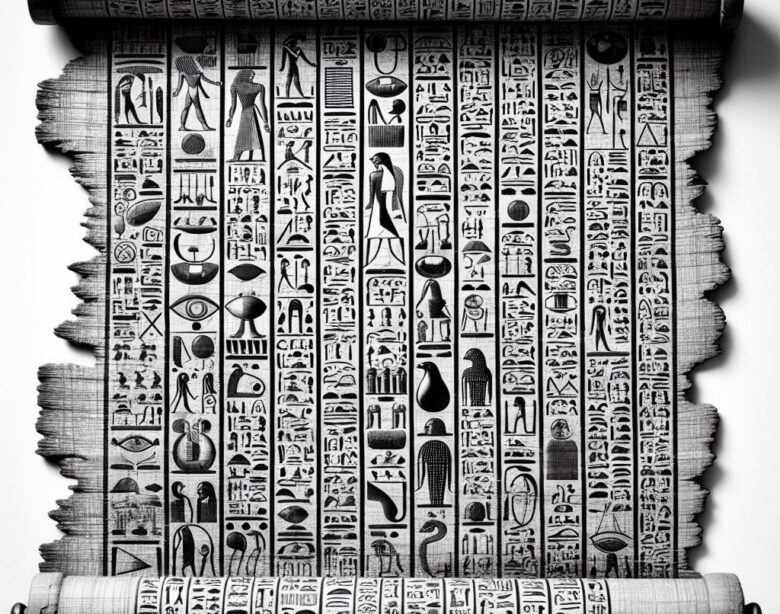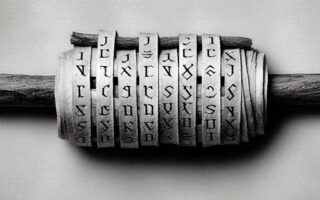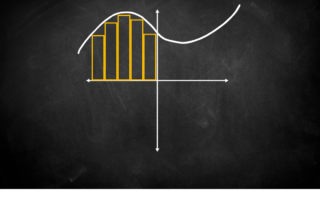The Rhind Mathematical Papyrus is an ancient Egyptian document, dating back to around 1550 BCE, that provides a detailed insight into the mathematics practiced by the Egyptians. Named after Alexander Henry Rhind, the Scottish antiquarian who purchased it in 1858, the papyrus is a scroll over 5 meters long and contains 84 mathematical problems and their solutions. Written in hieratic script, it includes a wide range of mathematical topics, such as arithmetic operations, geometry, and fractions. The papyrus was likely used as a teaching tool for scribes, illustrating practical methods for solving everyday problems related to land measurement, construction, and resource distribution.
Influence on Future Mathematical Concepts
The Rhind Mathematical Papyrus represents a critical stage in the history of mathematics, bridging the gap between early arithmetic and the more sophisticated mathematical systems that would develop in later civilizations. Although the mathematical techniques used by the Egyptians were largely practical and geared towards solving specific problems, they laid the groundwork for several future mathematical concepts:
- Development of Fractions: The Egyptians’ use of unit fractions influenced later civilizations, particularly the Greeks, who adopted and refined the concept of fractions. The Greeks expanded on the idea of fractions and developed the concept of ratios, which became a fundamental aspect of their mathematical theories.
- Foundation for Geometry: The geometric problems and formulas found in the Rhind Papyrus contributed to the early development of geometry as a mathematical discipline. The practical geometry of the Egyptians provided a basis for the more abstract and theoretical geometry that would later be developed by the Greeks, most notably by Euclid in his seminal work “Elements.”
- Precursor to Algebra: While the problems in the Rhind Papyrus do not constitute algebra in the modern sense, they do exhibit a form of algebraic thinking. The use of equations to solve for unknowns and the manipulation of quantities to achieve a desired outcome are foundational concepts that would later be formalized in the development of algebra by mathematicians such as Al-Khwarizmi in the 9th century CE.
- Influence on Greek and Islamic Mathematics: The knowledge contained in the Rhind Papyrus was transmitted to other civilizations through trade and cultural exchange. The Greeks, who had extensive contact with Egypt, were particularly influenced by Egyptian mathematics. This influence is evident in the works of Greek mathematicians such as Thales and Pythagoras, who traveled to Egypt to study its mathematical and scientific traditions. Later, during the Islamic Golden Age, scholars translated and preserved many of the Greek mathematical texts that had been influenced by earlier Egyptian knowledge, further contributing to the dissemination and development of mathematical ideas.
- Contribution to Arithmetic and Number Theory: The methods of multiplication and division by doubling and halving, as practiced by the Egyptians, foreshadowed the development of binary arithmetic and number theory. These concepts would eventually become central to the work of mathematicians such as Fibonacci, who introduced the Hindu-Arabic numeral system to Europe in the 13th century, and later, in the development of modern computer science.
Legacy of the Rhind Mathematical Papyrus
The Rhind Mathematical Papyrus is not only a testament to the mathematical abilities of the ancient Egyptians but also a key link in the chain of mathematical development that connects the ancient world to modern times. Its influence can be traced through the mathematical advancements of the Greeks, the Islamic mathematicians of the Middle Ages, and the European mathematicians of the Renaissance and beyond.
One of the most significant aspects of the papyrus is its demonstration of the practical application of mathematics in everyday life. The problems in the papyrus are rooted in real-world scenarios, such as measuring land, distributing food, and constructing buildings. This emphasis on practical mathematics is a theme that has persisted throughout the history of mathematics and continues to be relevant today.
The Rhind Mathematical Papyrus also highlights the importance of education in the preservation and transmission of mathematical knowledge. As a teaching tool, the papyrus was likely used to train scribes, ensuring that the mathematical techniques developed by the Egyptians were passed down to future generations. This tradition of mathematical education and the written transmission of knowledge is a key factor in the advancement of mathematics as a discipline.
In conclusion, the Rhind Mathematical Papyrus is a remarkable document that provides a window into the mathematical world of ancient Egypt. Its influence on the development of mathematical concepts, particularly in the areas of fractions, geometry, and algebraic thinking, is profound and far-reaching. The papyrus stands as a testament to the ingenuity of the ancient Egyptians and their contributions to the foundation of mathematics, a legacy that continues to shape the mathematical landscape today.
Please Visit Our Sponsors:
We only support vendors that we use ourselves in our home. The links below are our own links or affiliate links but know that we use all of these now, or have in the past. As the author/creator of this blog, I also tutor mathematics on Wyzant, sell on Etsy, create content on TpT, and learn Korean on Rosetta Stone.





